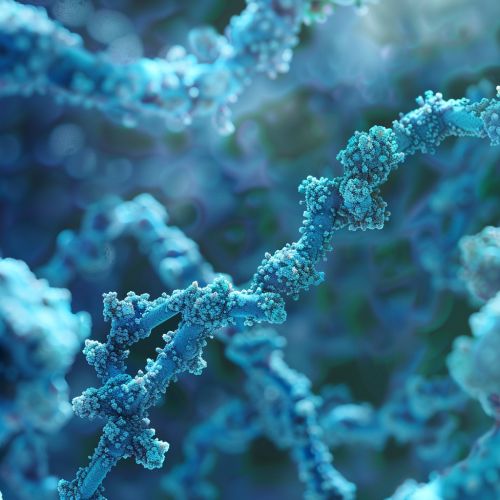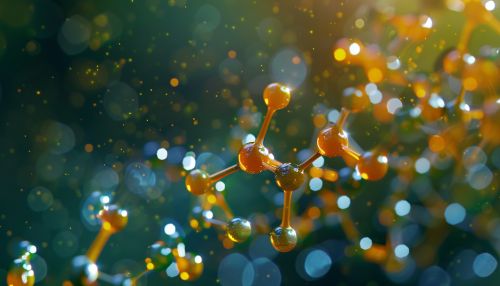5-lipoxygenase
Overview
5-Lipoxygenase (5-LOX) is an enzyme that in humans is encoded by the ALOX5 gene. Enzymes are proteins that act as catalysts in various biochemical reactions. 5-LOX plays a crucial role in the conversion of essential fatty acids into leukotrienes, a group of bioactive lipids. Leukotrienes are involved in various physiological and pathological processes, including inflammation and allergic reactions.


Structure
The structure of 5-lipoxygenase is complex, consisting of several domains. The N-terminal C2-like domain, also known as the PLAT domain, is involved in membrane binding. The catalytic domain is located in the C-terminal part of the enzyme and contains the non-heme iron necessary for enzyme activity. The enzyme also contains a regulatory domain, which is responsible for the activation of the enzyme.
Function
5-lipoxygenase catalyzes the first two steps in the biosynthesis of leukotrienes from arachidonic acid. It first converts arachidonic acid to 5-hydroperoxyeicosatetraenoic acid (5-HPETE), and then further converts 5-HPETE to leukotriene A4 (LTA4). Leukotriene A4 can be further converted to other leukotrienes, which are involved in various physiological and pathological processes.
Role in Disease
Alterations in 5-lipoxygenase activity have been implicated in a variety of diseases. For instance, increased 5-LOX activity has been associated with inflammatory diseases such as asthma and arthritis. Additionally, 5-LOX has been implicated in the pathogenesis of cardiovascular diseases, neurodegenerative diseases, and cancer.
Inhibitors
Given the role of 5-lipoxygenase in disease, it has been a target for drug development. Several 5-LOX inhibitors have been developed, including zileuton, which is approved for the treatment of asthma. Other 5-LOX inhibitors are currently in various stages of development and clinical trials.
